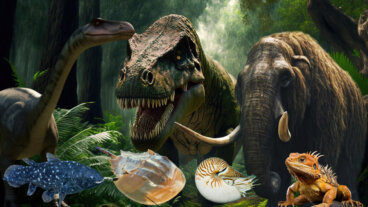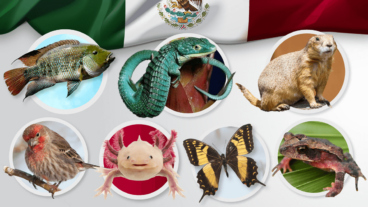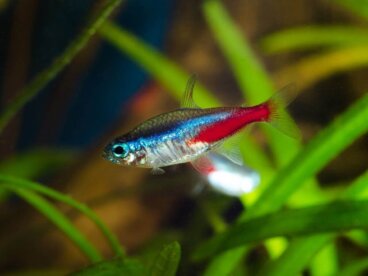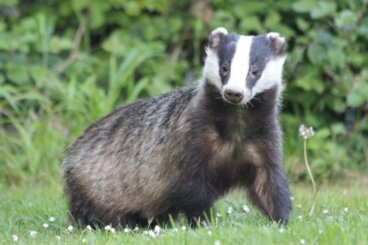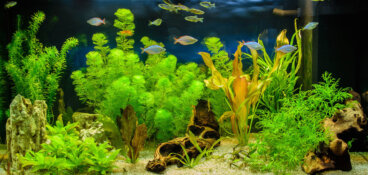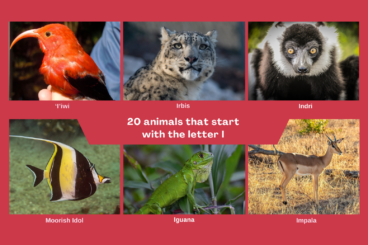Learn All About Greenland's Wildlife
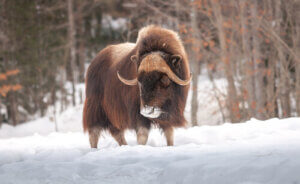
Ice covers almost one-third of this huge island between the Arctic Ocean and the Atlantic Ocean. The rest consists of the coastline and tundra. But this hasn’t prevented animals from living in such conditions. In this article, we’ll tell you all about Greenland’s wildlife.
What is Greenland’s wildlife like?
It’s a bit difficult to think how animals manage to survive in such harsh conditions as ice, cold, and scarcity of food. However, nature is more than wise and has provided them with everything they need to survive. Greenland’s wildlife isn’t very extensive, and is characterized by the following species:
1. The musk ox
This huge mammal related to goats and sheep has two characteristics that distinguish it from the others. First, its horns – present in both sexes – which are curved at the sides of the head. And second, its body with long hair that covers it completely (except for the legs).
The musk ox -which appears in this article’s main photo- can weigh about 880 pounds. It’s robust and has short legs and a small tail. It lives in herds of up to 100 individuals, breeds in August, and aggressively cares for its young.
2. The polar bear
The great inhabitant of the Arctic is another of the best known of the island, although its population is decreasing due to global warming and the lack of seals, its main food.
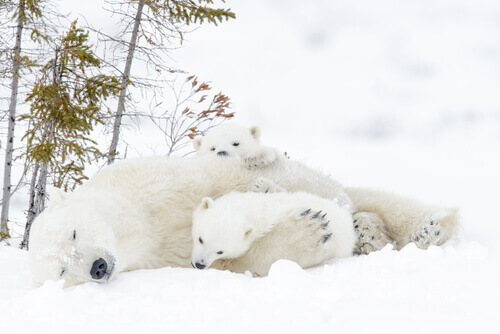
It has more developed paws than others in its family of ursids in order to be able to walk between ice blocks and swim long distances. Under its white fur, it has black fur to attract radiation and retain heat.
3. The walrus
This is another of the animals among Greenland’s wildlife. It’s a large pinniped mammal – about 9 feet long and weighing 2870 pounds – that we can see in the Arctic seas. Its skin is very thick (over an inch) and both sexes have tusks over 3 feet long.
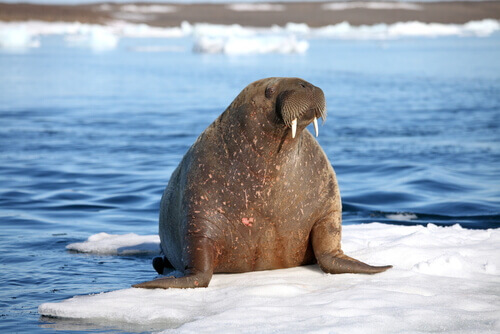
4. The polar fox
This small canid that inhabits the tundra and slopes of Eurasia and North America ‘entered’ Greenland by walking on the ice hundreds of years ago. With small ears, and a body measuring about 22 inches, the polar fox is an inhabitant of the coldest areas of the planet.
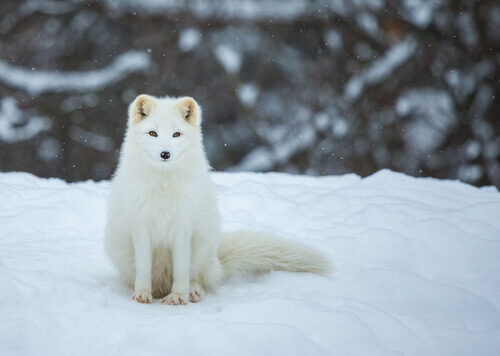
5. The bearded seal
This is another pinniped that’s part of the fauna of Greenland and the Arctic Ocean. With no visible ear and flippers pointing ‘backward’, the main characteristic that distinguishes it from other seals is the beard and mustache, which grows considerably.
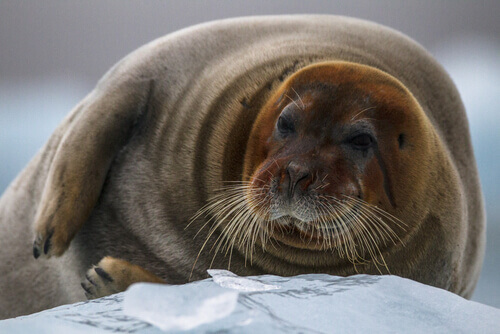
The bearded seal is less than 9 feet long and can weigh more than 660 pounds; there’s not much difference between the sexes in terms of size. It feeds on clams, fish, and squid, which it detects thanks to its long whiskers at a depth of around 980 feet.
Ice covers almost one-third of this huge island between the Arctic Ocean and the Atlantic Ocean. The rest consists of the coastline and tundra. But this hasn’t prevented animals from living in such conditions. In this article, we’ll tell you all about Greenland’s wildlife.
What is Greenland’s wildlife like?
It’s a bit difficult to think how animals manage to survive in such harsh conditions as ice, cold, and scarcity of food. However, nature is more than wise and has provided them with everything they need to survive. Greenland’s wildlife isn’t very extensive, and is characterized by the following species:
1. The musk ox
This huge mammal related to goats and sheep has two characteristics that distinguish it from the others. First, its horns – present in both sexes – which are curved at the sides of the head. And second, its body with long hair that covers it completely (except for the legs).
The musk ox -which appears in this article’s main photo- can weigh about 880 pounds. It’s robust and has short legs and a small tail. It lives in herds of up to 100 individuals, breeds in August, and aggressively cares for its young.
2. The polar bear
The great inhabitant of the Arctic is another of the best known of the island, although its population is decreasing due to global warming and the lack of seals, its main food.

It has more developed paws than others in its family of ursids in order to be able to walk between ice blocks and swim long distances. Under its white fur, it has black fur to attract radiation and retain heat.
3. The walrus
This is another of the animals among Greenland’s wildlife. It’s a large pinniped mammal – about 9 feet long and weighing 2870 pounds – that we can see in the Arctic seas. Its skin is very thick (over an inch) and both sexes have tusks over 3 feet long.

4. The polar fox
This small canid that inhabits the tundra and slopes of Eurasia and North America ‘entered’ Greenland by walking on the ice hundreds of years ago. With small ears, and a body measuring about 22 inches, the polar fox is an inhabitant of the coldest areas of the planet.

5. The bearded seal
This is another pinniped that’s part of the fauna of Greenland and the Arctic Ocean. With no visible ear and flippers pointing ‘backward’, the main characteristic that distinguishes it from other seals is the beard and mustache, which grows considerably.

The bearded seal is less than 9 feet long and can weigh more than 660 pounds; there’s not much difference between the sexes in terms of size. It feeds on clams, fish, and squid, which it detects thanks to its long whiskers at a depth of around 980 feet.
This text is provided for informational purposes only and does not replace consultation with a professional. If in doubt, consult your specialist.


